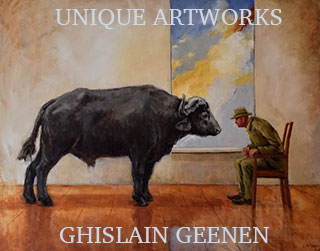The Home Office reported this year that there are almost 1.4 million legally held shotguns and 600,000 other legally held firearms, which are mostly Section 1 Rifles, in the UK.
Of those, five thousand have been reported stolen since 2011, that is five hundred thefts per annum on average. So, the chance of your gun being stolen this year is less than half a percent.
Firearms used in crime tend not to be stolen sporting guns. The fashion among criminals is to convert replica pistols to fire live ammunition. Customs officers have seized over five hundred such conversions at the border, since 2018.
The police, however, take firearms security very seriously and your licence stipulates the measures you must take to keep them from getting into the wrong hands.
Rare, as it is, targeted burglary of firearms is a crime and it does sometimes happen. In 2019, a team of burglars in Leicester raided a home while the owners were away and ripped a gun cabinet off the wall, stealing seven guns and a large quantity of ammunition.

In 2021, burglars in Mildenhall gained entry to a house and managed to open a cabinet and steal three shotguns. In both cases, arrests were made but not all the guns were recovered.
With the recent criminal hack of Guntrader by political activists and the dissemination of the addresses of gun owners to the criminal fraternity, we would all be wise to be extra-vigilant at the moment.
The National Crime Agency advise includes: ‘double-checking all doors and windows are locked when you leave the home; keeping gun cabinet keys secured away from the safe itself in a discreet location; being aware of "any suspicious activity such as people watching your property, or following you back from places where the shotgun may have been used/seen"; and not leaving firearms or shotguns unattended in a vehicle.’
The conditions of firearms ownership include ‘Condition 4 (a)’: “The firearms and ammunition [or shotguns] to which the certificate relates must at all times be stored securely so as to prevent, so far as is reasonably practicable, access to the firearms or ammunition by an unauthorised person.”
In essence, your firearms, shotguns, moderators and rifle ammunition must be locked away securely enough to prevent theft ‘so far as reasonably practicable’. That means there are limits on the measures the police can insist upon, otherwise, I suspect, nobody would meet the criteria they set.

Most people these days have a generic steel gun cabinet. At the time of application for a licence, the police will inspect it to see if it conforms to the standard they specify and whether it is adequately secured and appropriately located.
This is the basic level of security required to satisfy the police and stop yourself from getting into trouble should you be burgled and your guns stolen.
There are, however, other options and measures that can help. CCTV is cheap these days. Setting up a system can cost as little as £300 and it records and works from an ‘app’ on your smart ‘phone. CCTV is a helpful visual deterrent, as well as providing evidence of any intrusion.
If the burglars can’t find your safe, they can’t do anything. So, it is a sensible extra level of security to disguise or hide it. Some very nicely made and very expensive gun cabinets, hidden within Wellington Chests are available but most savvy burglars will recognise what they are. However, they should fool 50% of burglars, which is already a statistical win.
Anyone with a modicum of carpentry skills should be able to fashion a home-made version of this. Simply buy an antique wardrobe at auction for £50 and re-assemble it around your cabinet, making it look like a wardrobe or cupboard.
Hiding the cabinet in a recess in the wall and covering it with a long mirror on hidden hinges requires a bit more DIY work but is also effective.
I don’t recommend putting gun safes in roof voids or cellars as the temperature variations and damp will be detrimental to your guns’ health.
The best option, if you have the space is to convert a small room, or section-off a section of a large room, and make your own walk-in gun room. The Home Office even provides construction guidelines for doing so. These can be found at https://www.gov.uk/government/publications/firearms-security-handbook/firearms-security-handbook-2020-accessible
If you follow them you will be assured of approval but in my experience it is always best to consult the police with your plans in advance so any objections or specifications they raise can be factored in before you start, rather than after you have finished.

The ideal gun room will have brick walls and the minimum number of outside walls possible. Windows should be secondary glazed and barred. A monitored alarm should be set-up inside and outside the room. The door can be a steel security door (comes complete with frame and costs around £250) or a metal-barred cage that fits over the existing door frame. Mine cost about £1,000 to have fabricated and fitted.
The ground floor is best but if the gun-room is upstairs, put down security mesh (it comes in flat profile eight-foot-by-four-foot sheets) then put your underlay and engineered-wood tongue and groove floor on top. Likewise, any stud-partition wall should first be clad in the same mesh (it resists impact blows and binds angle grinder blades) before being plaster boarded and skimmed. Even better, clad the walls in oak-faced ply-wood.
Then there is the tricky question of keys. Combination locks obviate this but if you do have keys, create a place to hide them that would not be obvious; putting the key on the top of the door frame or in the drawer in the hall will probably un-do all the good work you have done making your security look good.
Police recommend you buy a small safe with a combination lock and put your keys in that. They refer to these multiple security steps as ‘layered security measures’, each one making it harder for the criminal to even start the next stage of gaining access to your guns.
The longer it takes them, the less they are likely to persist, as the longer they are in the house, the greater the chance of them being caught.
One trick that may appeal is to have a small gun safe bolted to a wall in plain view. It will cost you about £80. Lock it and leave it empty, with your guns in another safe, which is not immediately visible. Chances are any motivated gun thief will expend a lot of time and effort in gaining entry to that empty safe before he even starts looking for a hidden one. That may buy you all the time you need.
Published by Vintage Guns Ltd on (modified )



